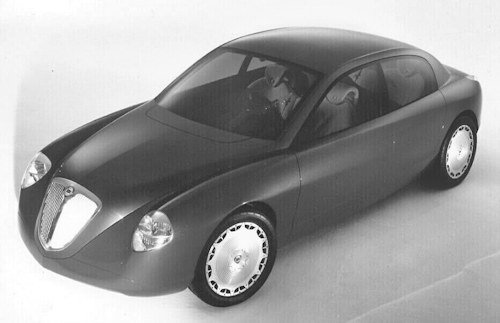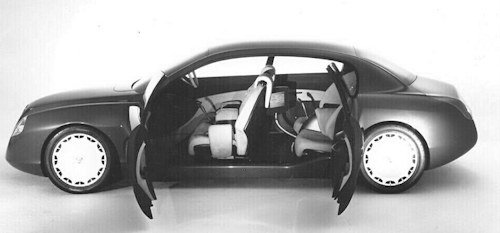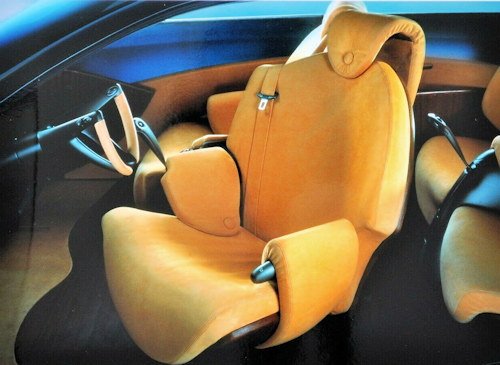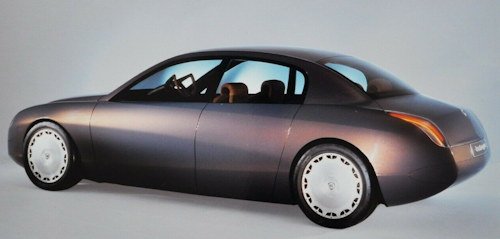Lancia Dialogos concept
 | |
Presentation Year: | 1998 |
Vehicle Expo: | Turin Motor Show |
Class : | Concept |
Body design : | limousine |
Length: | 4990 mm |
Width: | 1950 mm |
Height: | 1490 mm |
Wheelbase: | 3050 mm |
The Lancia Dialogos is a concept car of the brand Lancia . It was presented in 1998 at the Turin Motor Show.
History
The Lancia Dialogos can be considered a precursor to the production car Lancia Thesis .The exterior is characterized by an organic closed design language and long flowing curves. In the broadest sense, the Lancia Appia , which also had opposite-opening doors and was also without a B-pillar, can serve as a model. The grille of the Dialogos has been gradually introduced on all Lancia models.
The concept has lived through many phases within its life, in which it has taken on several forms up to the final one in May 1997. It has experienced an initial phase of research of a very free style which in the summer of 1996 gave birth to 5 clay models in 1: 4 scale and finally only three hypotheses have been developed: Agorà (Marco Tencone), Arca ( Pietro Camardella ) and Tikal (Andrea Bassi); later Agorà and Arca merge under the guidance of Camardella to become the definitive prototype exhibited at the Turin motor show in 1999.

The final model looks like a large 3-volume sedan at the specific request of the Lancia CEO of the time, Paolo Cantarella , and is characterized by very clean and retro lines reminiscent of the Lancias of the past, the rear door openings were upwind while those at the front, they were in the wind, creating a large light space, with the doors open, allowing great accessibility to the entire passenger compartment.
The steering could be moved from the driver to the passenger, the seating was arranged in two rows of seats that are reminiscent of contract furniture the seats that can be rotated 90 ° outwards on the side of the vehicle. the Ego Mode system which performs the functions of switching the engine on and off and opening the doors, automatic gearbox management, impact radar and camera system. for driving and assisted maneuvers Using a memory chip, the electronics recognized the driver and accordingly automatically adjusted the car. For . the seat brought into the correct position, the chassis adapted to the driving style.

This concept was defined in 1996 , when Lancia decided to create a car that would enhance all aspects of a dream car . The concept therefore summed up not only the elegance and tradition of the Turin brand , but also all the technology acquired over the years, with the addition of futuristic elements in contrast with re-enactments of the cars of the past. The project was directed by the Lancia Style Center, in particular by Mike Robinson director of the center, Pietro Camardella author of the Arca proposal , at the time in charge of exteriors and interim of the interiors, Marco Tencone author of the Agorà proposal, senior designer at the time, and Flavio Manzoni who followed the interiors (at the time junior interior designer).




